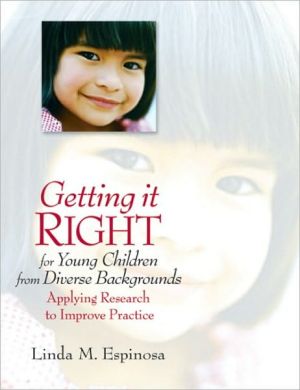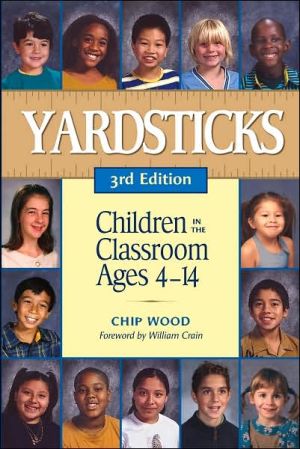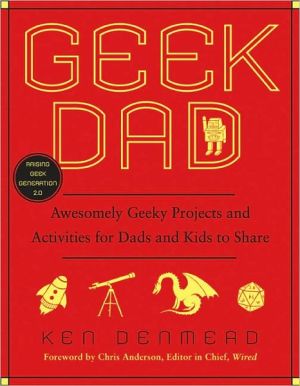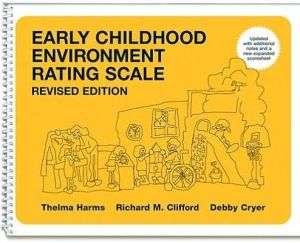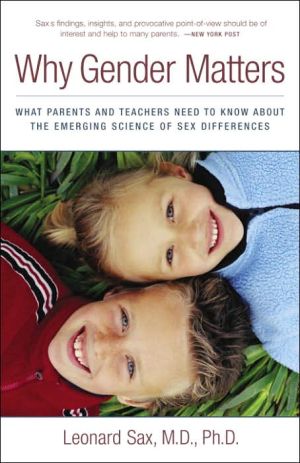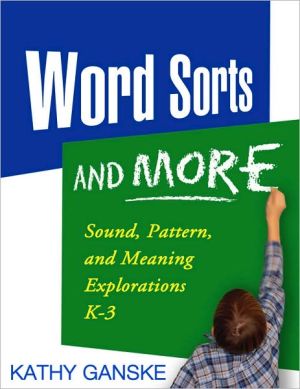Getting it RIGHT for Young Children from Diverse Backgrounds: Applying Research to Improve Practice
Reviewers’ Comments about Getting it RIGHT for Young Children from Diverse Backgrounds: Applying Research to Improve Practice by Linda M. Espinosa “The research to practice link is the major contribution of this text and something that is sorely needed as early childhood educators come into contact with the increasingly diverse child population. I am sure that teachers will appreciate the concrete teaching strategies outlined and administrators will appreciate that these...
Search in google:
Reviewers’ Comments about Getting it RIGHT for Young Children from Diverse Backgrounds:Applying Research to Improve Practice by Linda M. Espinosa “The research to practice link is the major contribution of this text and something that is sorely needed as early childhood educators come into contact with the increasingly diverse child population. I am sure that teachers will appreciate the concrete teaching strategies outlined and administrators will appreciate that these strategies are based on sound developmental theory and high quality research.” –Marlene Zepeda, California State University, Los Angeles “It is research-based, yet there are meaningful cases and anecdotes that personalize the text for the reader. There is no question that this textbook reflects the current state-of-the-field in terms of best practice and research…I especially like all the vignettes, case studies, and illustrations because it makes the reader think about issues and personalize them.” –Hersh Waxman, Texas A&M University, College of Education and Human Development “It provides a rich and comprehensive look at the needs of young children from diverse backgrounds…This text covers recent research, culture, bilingualism, language acquisition and brain development, and demographic realities including poverty. It emphasizes the importance of collaboration among teachers and families in the community to best serve students. Furthermore, curriculum and assessment guidelines for teachers are presented.” –Gina Cicco, Hostos Community College of The City University of New YorkUniversity “I like that it is logical, well organized, and that it applies to any reader. This…is also encouraging to the early childhood practitioner who advocates for quality programs for young children on a daily basis. With information like this, the challenge doesn’t seem as daunting.” –Stephanie Deering, South Plains College, Lubbock, Texas
Chapter 1 Early Childhood Education, Diversity and Educational Equity : The Why of Early Childhood Education Why the Increased Focus on Early Childhood Programs Right Now? Public Program for Young Children Summary Reflection and Discussion Questions Chapter 2 The Changing Face of Early Childhood in the U.S.: New Promises and Pitfalls Current Demographics and Population Projections Children in Poverty Increasing Linguistic Diversity in Early Childhood Programs Increases in Hispanic/Latino Population Culture and Early Education Preschool and English Language Learners Early Education Standards Movement and Diversity Summary Reflection and Discussion Questions Chapter 3 What Research Tells Us About The Needs and Abilities of All Young Children The Science of Early Education Social-Emotional Roots of All Learning: The Importance of Positive Relationships Implications of Research for Early Childhood Practitioners Risk and Resiliency in Young Children Summary Reflection and Discussion Questions Chapter 4 Research Findings and Recommendations for Children Living in Poverty Issues and Considerations for Children Living in Poverty The Importance of Resiliency What Teachers Can Do School Readiness and Low-Income Children The Importance of High Quality Curricula: Specific Strategies Professional Development and Effective Teacher Supports Achieving Success: Schools, Families, and Communities Working Together Summary Reflection and Discussion Questions Chapter 5 Research on the Development, Learningand Teaching of Young English Language Learners Issues and Considerations for ELL Children Myths About English Language Learners Not Supported by Scientific Evidence English Language Learners and School Readiness: Overlapping Influences of Language and Poverty Role of Home Language in English Acquisition How do Young Children Learn a Second Language? Bilingualism and Social-Emotional Development Research on Different Curriculum/Program Approaches Working with ELL Families Summary Reflection and Discussion Questions Chapter 6 Promising Curriculum and Assessment Strategies for Young English Language Learners The Importance of Goals Specific Teaching Strategies in Dual Language Early Childhood Programs The Importance of a Comprehensive Curriculum Specific Strategies in English Language Programs with Home Language Support Assessment Approaches: How to Collect Accurate Information on the Development of Dual Language Learners Putting it All Together: ECE Settings Where ELL Children Can Flourish Summary Reflection and Discussion Questions Chapter 7 Meeting the Future Challenges of Early Childhood Education National Will/Consensus Using Research, Advocacy, and Persistence to Move the Agenda Forward: Inch-by-Inch, Step-by-Step Link to National Education Priorities/Policies Investment/Resources Needed Summary Reflection and Discussion Questions Appendix A Sample Family Languages and Interests Survey Appendix B Resources for Serving Young Children from Diverse Backgrounds Appendix C Information on The Early Authors’ Program Appendix D Sample Individualized Language Plan Glossary References Index
\ From the Publisher“The research to practice link is the major contribution of this text and something that is sorely needed as early childhood educators come into contact with the increasingly diverse child population. I am sure that teachers will appreciate the concrete teaching strategies outlined and administrators will appreciate that these strategies are based on sound developmental theory and high quality research.”\ --Marlene Zepeda, California State University, Los Angeles\ \ “It is research-based, yet there are meaningful cases and anecdotes that personalize the text for the reader. There is no question that this textbook reflects the current state-of-the-field in terms of best practice and research…I especially like all the vignettes, case studies, and illustrations because it makes the reader think about issues and personalize them.”\ —Hersh Waxman, Texas A&M University, College of Education and Human Development\ \ “It provides a rich and comprehensive look at the needs of young children from diverse backgrounds…This text covers recent research, culture, bilingualism, language acquisition and brain development, and demographic realities including poverty. It emphasizes the importance of collaboration among teachers and families in the community to best serve students. Furthermore, curriculum and assessment guidelines for teachers are presented.”\ --Gina Cicco, Hostos Community College of The City University of New York University\ \ “I like that it is logical, well organized, and that it applies to any reader. This…is also encouraging to the early childhood practitioner who advocates for quality programs for young children on a daily basis. With information like this, the challenge doesn’t seem as daunting.”\ --Stephanie Deering, South Plains College, Lubbock, Texas\ \ \ \
